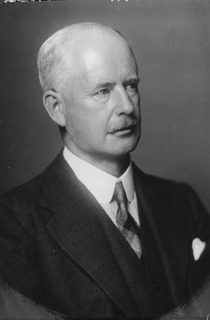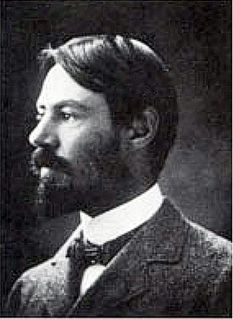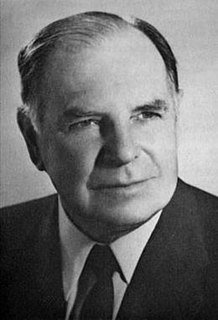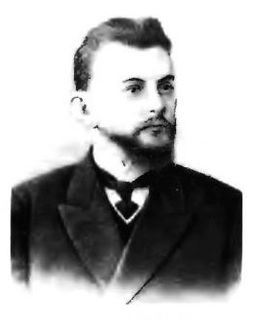
Joseph Charles Arthur was a pioneer American plant pathologist and mycologist best known for his work with the parasitic rust fungi (Pucciniales). He was a charter member of the Botanical Society of America, the Mycological Society of America, and the American Phytopathological Society. He was a recipient of the first Doctorate in Sciences awarded by Cornell University. The standard author abbreviation Arthur is used to indicate this person as the author when citing a botanical name.

Sir Rowland Harry Biffen FRS was a British botanist, mycologist, geneticist and a professor of agricultural botany at the University of Cambridge who worked on breeding wheat varieties. He was also a gifted artist known for his landscapes in watercolours. He was the founder of the Journal of Agricultural Science.

Sir Edwin John Butler FRS was an Irish mycologist and plant pathologist. He became the Imperial Mycologist in India and later the first director of the Imperial Bureau of Mycology in England. He was knighted in 1939. During his twenty years in India, he began large scale surveys on fungi and plant pathology and published the landmark book Fungi and Disease in Plants: An Introduction to the Diseases of Field and Plantation Crops, especially those of India and the East (1918) and has been called the Father of Mycology and Plant Pathology in India.

Arthur Disbrowe Cotton, OBE was an English plant pathologist, mycologist, phycologist, and botanist. The standard author abbreviation Cotton is used to indicate this person as the author when citing a botanical name.

William Ashbrook Kellerman was an American botanist, mycologist and photographer.

Joseph Burtt Davy was a Quaker botanist and agrostologist. He was the first curator of the Forest Herbarium (FHO) at the Imperial Forestry Institute when it was founded in 1924 under the Directorship of Professor Robert Scott Troup.

Leslie Edward Wostall Codd, was a South African plant taxonomist.
Richard William George Dennis, PhD, was an English mycologist and plant pathologist.

Ernst Albert Gäumann was a Swiss botanist and mycologist. Born in Lyss, Canton of Bern, he obtained his early education in Biel, where he experienced both German and French languages and cultures. Studying with Eduard Fischer at the University of Bern, Gäumann received his PhD in 1917 for his research on Peronospora, a genus of water molds. After travels and study in Sweden, the United States, and the East Indies, Gäumann worked as a plant pathologist in Buitenzorg, Java, from 1919 to 1922, and then as a botanist in Zurich for several years. He held a position at the Swiss Federal Institute of Technology from 1927 until his death.
Raffaele Ciferri was an Italian botanist, agriculturalist and mycologist.

Boris Alexeevich Fedtschenko was a Russian plant pathologist and botanist. He is primarily known for his work on various regions of Russia, especially the Caucasus, Siberia and Asiatic Russia. He was also head botanist at the Saint Petersburg Botanical Garden.
Effie Almira Southworth Spalding (1860–1947), was an American botanist and mycologist, and the first woman plant pathologist hired by the United States Department of Agriculture (USDA). Her most important discovery was the 1887 identification of the fungus Colletotrichum gossypii as the cause of cotton cankers, a disease which killed thousands of acres of cotton and was a major economic threat. She taught botany at several institutions, worked at the Desert Botanical Laboratory with her husband, and established the Botany Department Herbarium at the University of Southern California.
Chirayathumadom Venkatachalier Subramanian, popularly known as CVS, was an Indian mycologist, taxonomist and plant pathologist, known for his work on the classification of Fungi imperfecti, a group of fungi classified separately due to lack of specific taxonomic characteristics. He authored one monograph, Hyphomycetes: An Account of Indian Species, Except Cercosporae and three books, Hyphomycetes, taxonomy and biology, Moulds, Mushrooms and Men and Soil microfungi of Israel, besides several articles published in peer reviewed journals. He was a recipient of many honours including the Rafi Ahmed Kidwai Award of the Indian Council of Agricultural Research, the Janaki Ammal National Award of the Government of India and seven species of fungi have been named after him. The Council of Scientific and Industrial Research, the apex agency of the Government of India for scientific research, awarded him the Shanti Swarup Bhatnagar Prize for Science and Technology, one of the highest Indian science awards, in 1965, for his contributions to biological sciences.
Mandayam Jeersannidhi Thirumalachar was an Indian mycologist, microbiologist, plant pathologist and the co-founder of Jeersannidhi-Anderson Institute, California. He was the head of R&D at Hindustan Antibiotics Limited and a professor at Banaras Hindu University as well as the Central College of Bangalore. He was known for the development of antifungal antibiotics such as Hamycin, Dermostatin, Aureofungin, MYc-4 and Tetraenenin and was an elected fellow of the Indian National Science Academy. The Council of Scientific and Industrial Research, the apex agency of the Government of India for scientific research, awarded him the Shanti Swarup Bhatnagar Prize for Science and Technology, one of the highest Indian science awards for his contributions to Medical Sciences in 1967.
Dr William McRae FRSE CIE was a Scottish botanist specialising in fungi and lichens. He is largely remembered for his extensive work in India.

John Collier Frederick Hopkins was a British mycologist. He was the son of William Henry Hopkins and Edith Eliza Hopkins. The standard author abbreviation J.C.F.Hopkins is used to indicate this person as the author when citing a botanical name.

Stephen Denis Garrett was a British plant pathologist and mycologist who did pioneering work on soil-borne pathogens, root pathology and soil ecology. He was the first to apply ecological concepts to interactions in the soil. Much of his research used as a model system the fungus Gaeumannomyces graminis, which causes the important cereal disease take-all. He also studied Armillaria root rot of trees, among other plant diseases.

William Brown was a British mycologist and plant pathologist, known for his ground-breaking research on fungal physiology and the physiology of plant parasitism by fungi, carried out in 1912–28. Born in rural Scotland and educated at the University of Edinburgh, he spent nearly all his career at the Imperial College of Science and Technology in London, where he created the plant pathology research school in the 1920s, becoming Britain's first professor of plant pathology in 1928, and heading the department of botany (1938–53). He was president of the Association of Applied Biologists and the British Mycological Society. He studied Botrytis cinerea, which causes grey mould in a variety of plants, and various Fusarium species that attack apples.
Frederick Bayard Hora B.Sc., D.Phil. (1908-1984) was a British mycologist.












